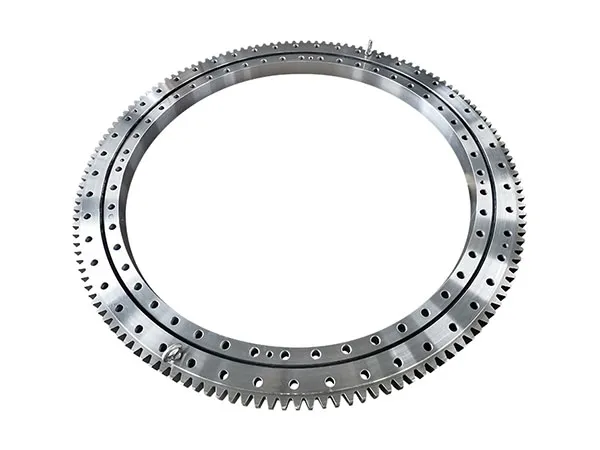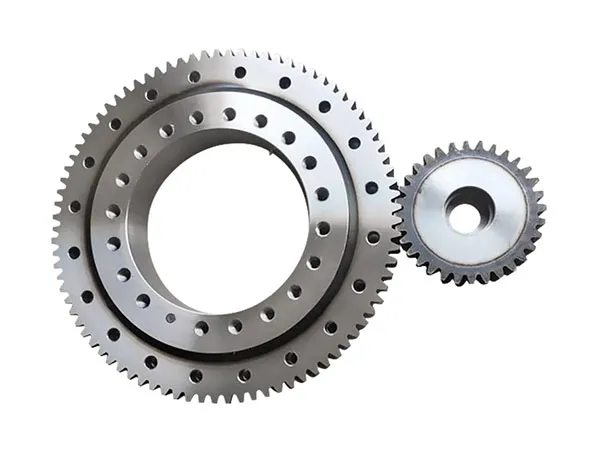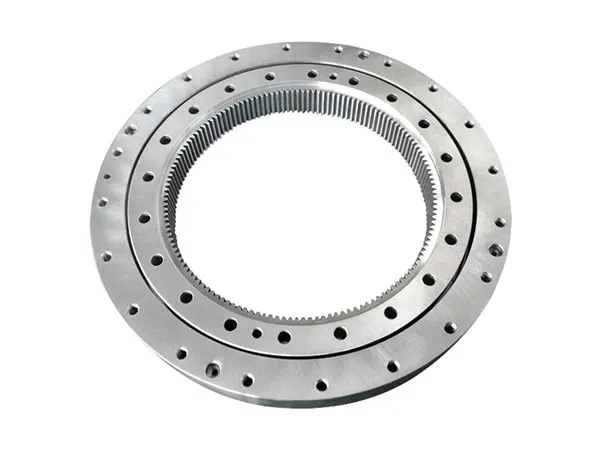- +86 13837949030 +86 15890619536
- info@lymcbearings.com export@lymcbearings.com
- Luoxin Industrial Cluster, Luoyang City,Henan Province,China
Time:2025-06-12 08:28:43 Source:LYMC Slewing Bearing
Non-standard slewing bearings are crucial components in various heavy machinery and precision equipment, designed to handle significant axial, radial, and moment loads in highly specialized applications. Unlike standard bearings, their customization process is intricate, involving close collaboration between the client and the manufacturer to meet unique operational demands.

The process begins with a comprehensive understanding of the client's needs. This involves:
Application Analysis: Understanding the specific machine or system where the slewing bearing will be used. This includes factors like the type of equipment (cranes, excavators, wind turbines, medical equipment, robotics, etc.), its operating environment (marine, high/low temperature, dusty, corrosive), and overall performance requirements.
Load Analysis: Detailed information on the static and dynamic loads the bearing will endure, including axial, radial, and overturning moment loads, as well as shock loads and vibration.
Dimensional Constraints: Precise dimensions of the mounting space, including outer diameter, bore size, width, and any specific mounting hole configurations.
Performance Specifications: Required rotational speed, precision (runout tolerances), stiffness, torque requirements, and expected service life.
Environmental Factors: Exposure to moisture, saltwater, chemicals, dust, extreme temperatures, and the need for specialized sealing or corrosion protection.
Special Features: Any unique requirements such as integrated gearing (internal, external, helical, worm gears), lubrication systems, control devices, or monitoring systems.
Material Preferences: While manufacturers often recommend materials, clients may have specific preferences or requirements for certain alloys (e.g., high-strength steel, stainless steel, specialized alloys like 42CrMo4, 50Mn, or even aluminum for lightweight applications).
Compliance and Certifications: Any industry-specific standards (e.g., ISO, AGMA, DEF STAN) or certifications required for the bearing.
Once the requirements are thoroughly understood, the engineering team commences the design phase:
Conceptual Design: Engineers develop initial concepts based on the gathered data, considering different slewing bearing types (e.g., four-point contact ball bearings, crossed cylindrical roller bearings, triple-row roller bearings, combined roller/ball bearings) that best suit the application.
Detailed CAD Modeling: Using advanced 3D modeling software, a detailed design of the non-standard bearing is created. This includes precise geometries of the inner and outer rings, raceways, rolling elements, cages/spacers, gearing, and sealing systems.
Material Selection: Based on load, environment, and performance requirements, appropriate materials are selected for the rings, rolling elements, and other components. This often involves specialized heat treatments to achieve desired hardness, wear resistance, and fatigue strength.
Structural Analysis (FEA): Finite Element Analysis (FEA) simulations are performed to validate the design's integrity under various load conditions, predict stress distribution, deflection, and stiffness, and optimize the design for maximum performance and lifespan.
Lubrication System Design: Designing or recommending a suitable lubrication system (grease or oil) and specifying lubricants based on operating conditions. This includes determining lubrication intervals and potential for advanced lubrication systems.
Sealing System Design: Custom sealing solutions (e.g., multi-lipped seals, steel labyrinth seals, chemical-resistant types, high/low-temperature versions) are designed to protect the bearing from contaminants and retain lubricant, especially in harsh environments.
Gear Design (if applicable): If the bearing requires integrated gearing, the tooth profile, module, and gear quality are meticulously designed to ensure efficient power transmission and durability.
Prototyping Considerations: If the design is highly novel or complex, considerations for prototyping and initial testing are included in the plan.

The manufacturing of non-standard slewing bearings is a highly specialized process, often involving state-of-the-art machinery and rigorous quality control. Key steps typically include:
Raw Material Acquisition: Sourcing high-quality steel (e.g., 50Mn, 42CrMo, GCr15SiMn) or other specified materials from reputable suppliers. Full traceability of materials is often maintained.
Material Cutting and Forging: The raw material billets are cut to size and then forged into ring blanks. Forging is crucial for refining the material's grain structure, enhancing density, and improving mechanical properties like strength and fatigue resistance.
Rough Turning: The forged rings undergo rough machining to create the basic shape, including grooves for raceways and initial outlines for gearing.
Heat Treatment (Quenching & Tempering): The bearing rings are subjected to precise heat treatment processes (e.g., induction hardening, through hardening, or carburizing) to achieve the desired hardness and wear resistance in the raceways and gears. This step is critical for the bearing's longevity.
Hole Processing: Drilling and machining of mounting holes on the inner and/or outer rings with high precision.
Gear Cutting (if applicable): If the bearing has a gear, the teeth are precisely cut using hobbing or gear shaping machines. Subsequent gear hardening may also be performed.
Fine Machining/Grinding: Precision grinding of the raceways and other critical surfaces to achieve the specified dimensional accuracy, surface finish, and runout tolerances. Superfinishing techniques may be used to optimize the raceway surface for lubrication and reduced wear.
Assembly:
Thorough cleaning of all components.
Careful assembly of the inner ring, outer ring, rolling elements (balls or rollers), and spacers/cages.
Insertion of sealing strips and initial lubrication.
Precise adjustment of internal clearance or preload to meet design specifications.
Quality Control and Testing:
Dimensional Inspection: Multi-channel dimensional inspections using high-precision measurement tools at various stages.
Hardness Testing: Verification of raceway and gear hardness.
Non-Destructive Testing (NDT): Ultrasonic testing for internal defects and magnetic particle flaw detection for surface cracks (especially after hardening).
Runout and Rotational Flexibility Testing: Ensuring smooth rotation and meeting precision requirements.
Torque Testing: Measuring operational torque.
Dynamic Balance Verification: For high-speed applications.
Corrosion Resistance Testing: If special coatings are applied.
Functional Testing: Some manufacturers may perform test runs or simulated load testing to validate performance before shipment.
Traceability: Maintaining detailed records for all materials and processes to ensure full traceability.

Anti-Rust Treatment: The finished bearings are coated with anti-rust oil.
Protective Packaging: Packaged with plastic film, kraft paper, and nylon wrapping belts, and placed in fumigated wooden cases to prevent damage during transit and storage.
Documentation: Each finished product is typically marked with a unique serial number and comes with a certificate of quality, assembly and maintenance manuals, and detailed inspection reports.
The entire non-standard slewing bearing customization process emphasizes meticulous design, material selection, advanced manufacturing techniques, and stringent quality control to deliver a product that perfectly meets the unique and demanding requirements of its intended application.